TWO-STROKE SPECIALS
We unearthed these ingenious and outlandish two-stroke creations in the CB archives. Any idea where they are now?
Words: HUGO WILSON Photography: BAUER
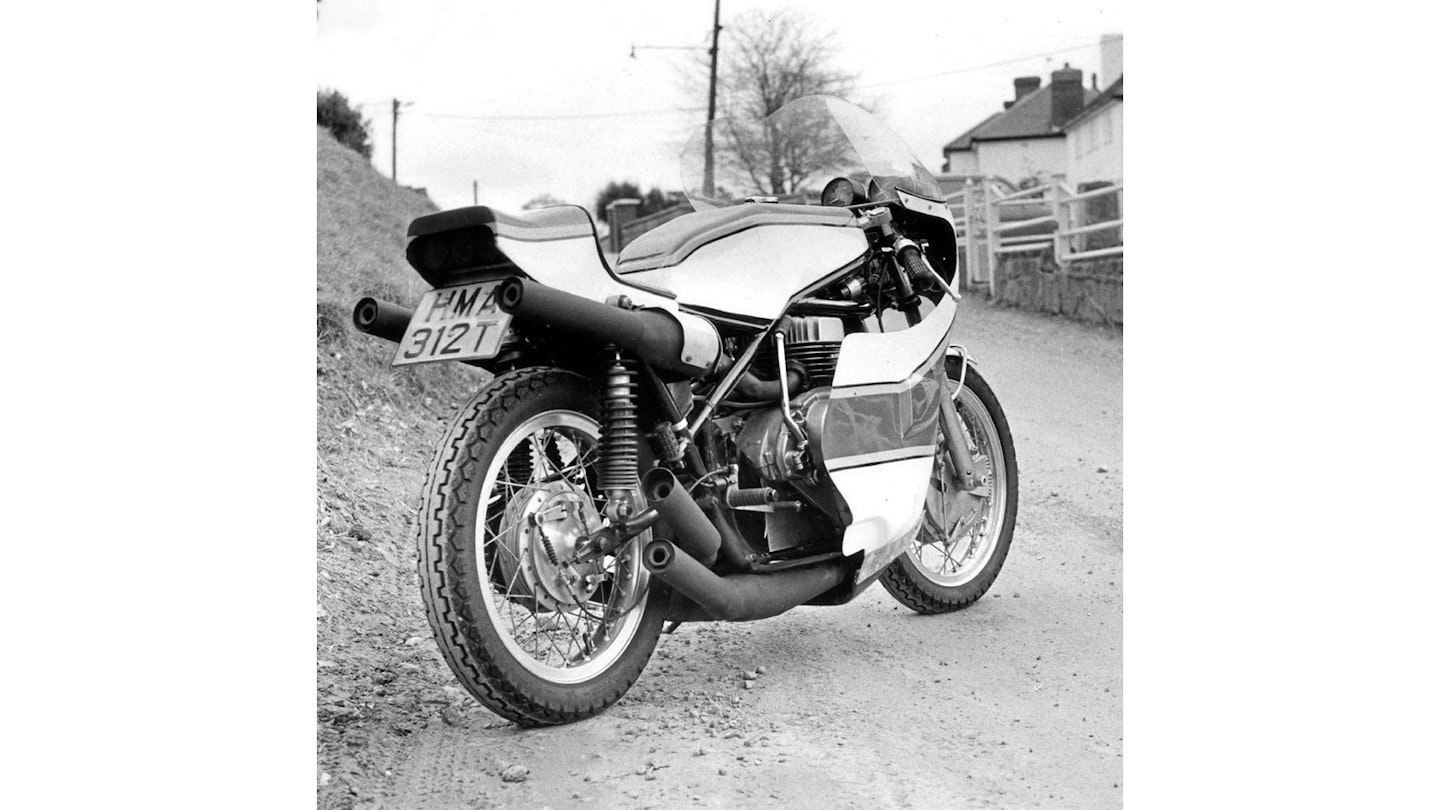
‘A V6 constructed by the simple expedient of grafting together a pair of KH250 engines’
DRM V6 500
Long before Allen Millyard started adding cylinders onto Kawasaki triples to make fours and fives, this enterprising gentleman constructed a V6 through the simple expedient of grafting together a pair of KH250 engines. Given that Kawasaki’s smallest-capacity triple has a power output of around 30bhp, doubling that should be enough to give this special a decent amount of oomph. The upper engine appears to have kept its gearbox, but has the cylinders reversed to put the carburettors into the vee. Registered in 1978 as a DRM – the initials of the father and son team who built it – the bike was sold in restored form (with Mick Grant replica paint) by Bonhams in 2011, who stated the much-modified frame started as a Norton Featherbed. Forks are also Norton, while the front brake is a four-leading-shoe Grimeca. The V6 is still on the DVLA database, and registered as a DRM, but apparently was last taxed in 1980. Is it in your garage?
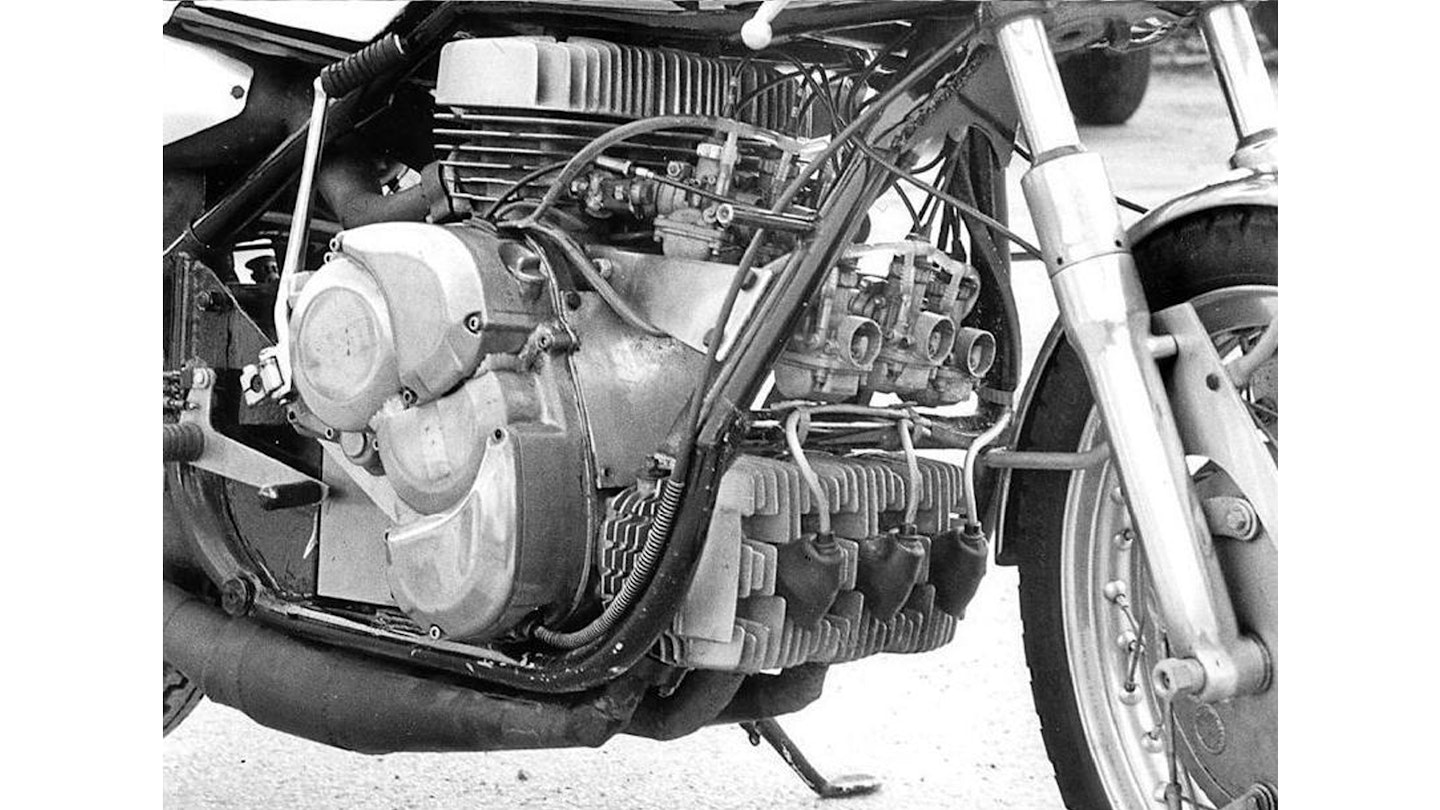
Pat Sefton’s TDRG500
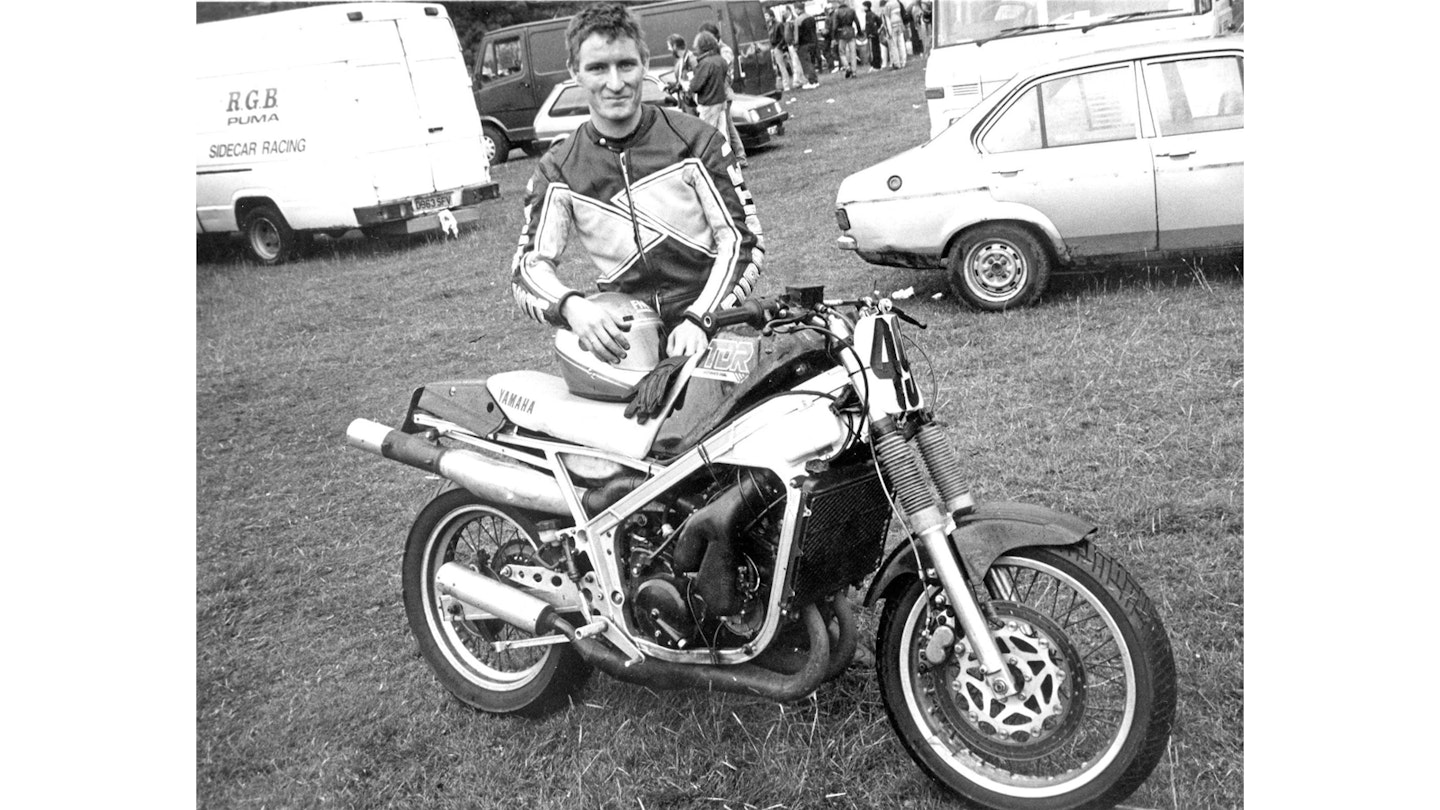
‘I took it to the TT one year. We had a lot of fun’
“I wanted to build something that steered like a Yamaha TDR250, but which was really fast,” explains Pat over the phone from his home in Cumbria. “So I bought a crashed Suzuki RG500 road bike for £800 and grafted on TDR forks, wheels and bodywork. The first time I fired it up was the morning of the Barbon hill climb in 1991. I rode it up on the road and then raced it up the hill. It went like holy hell. We won the 750 class and were in the top three overall, then we were fastest overall in 1992 and ’93, but in ’94 the gearbox broke. We were fastest again in 1995.
“The next year it broke a rod and punched a hole in the crankcase before we could race it, so I sold it in the paddock for £1750. I’d more or less decided it would be my last year anyway. It was a fantastic bike. In its final form, with a Stan Stephens tune and Swarbrick pipes, it made 90bhp with a powerband that went from 8000-12,500rpm – and it weighed less than 300lb, ready to race. It was road registered, so I took it to the TT one year. We had a lot of fun.”
So where is it now? “It’s here in the house,” Pat exclaims, clearly delighted. “Five years ago, the bloke I sold it to offered it to me – but it was in pieces. Nostalgia is a dangerous thing in a 50-year-old, so I had to have it back.
“Stan Stephens has rebuilt the engine and it’s now back on its wheels. There’s the plumbing, wiring and bodywork still to do, but it’ll be back at Barbon next year, 30 years after it last raced there. I’ll not be riding it, though – that’d end with broken bones.”
Killeen KT17
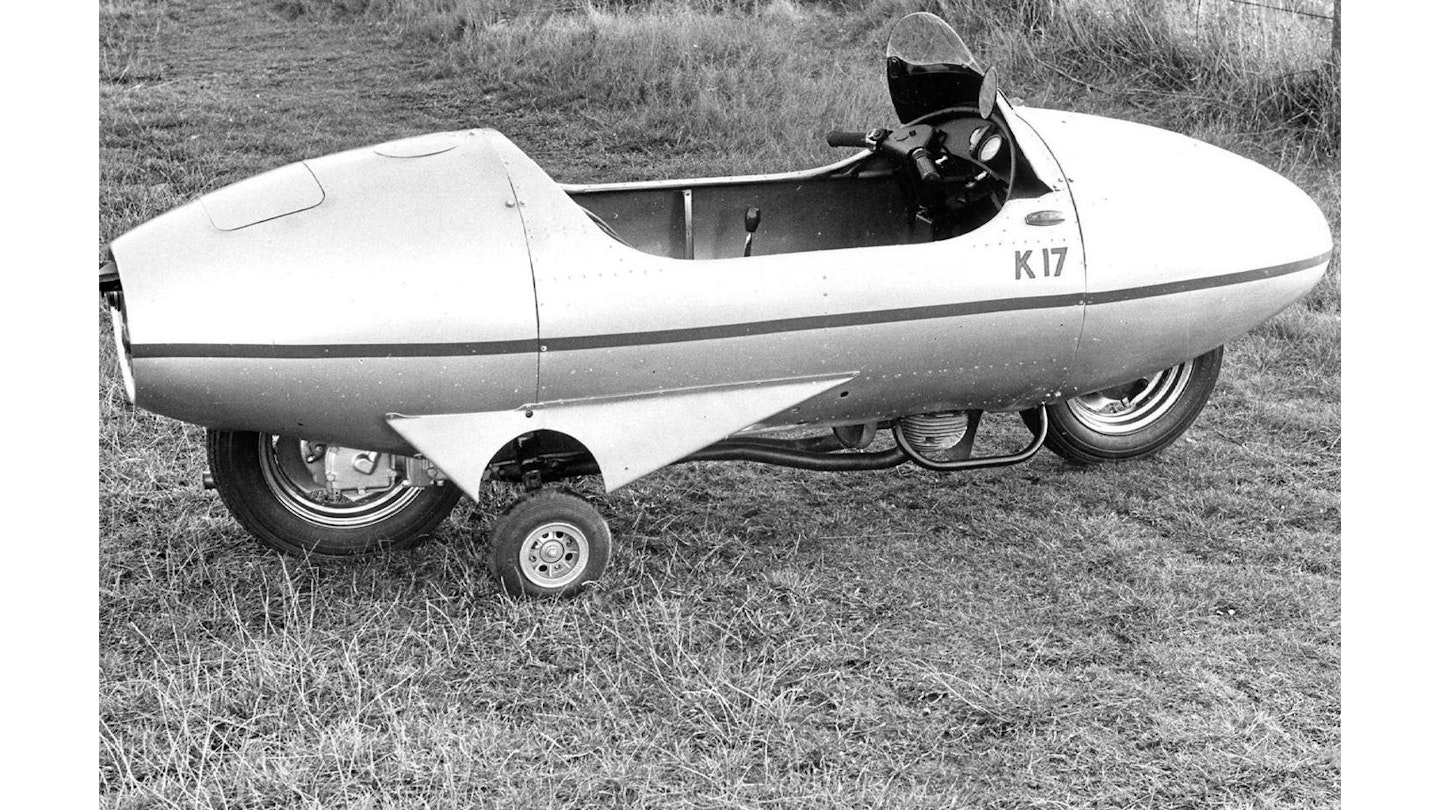
Former racing car designer Tom Killeen’s space-age vision for the future of city transport was an enclosed feet-first and outrigger-equipped device that looks like something out of Dan Dare. The bike (if that’s the correct term) used the air-cooled 247cc two-stroke flat-twin engine from Velocette’s Viceroy scooter and a modified version of its shaft-drive transmission.
The standard scooter made 15 horsepower and did 65mph, though Killeen opted for the more powerful 18bhp version of the engine that was intended for use in small hovercraft. Apparently this creation still exists. Is it loitering at the back of your shed?
Ossa Byra 1000
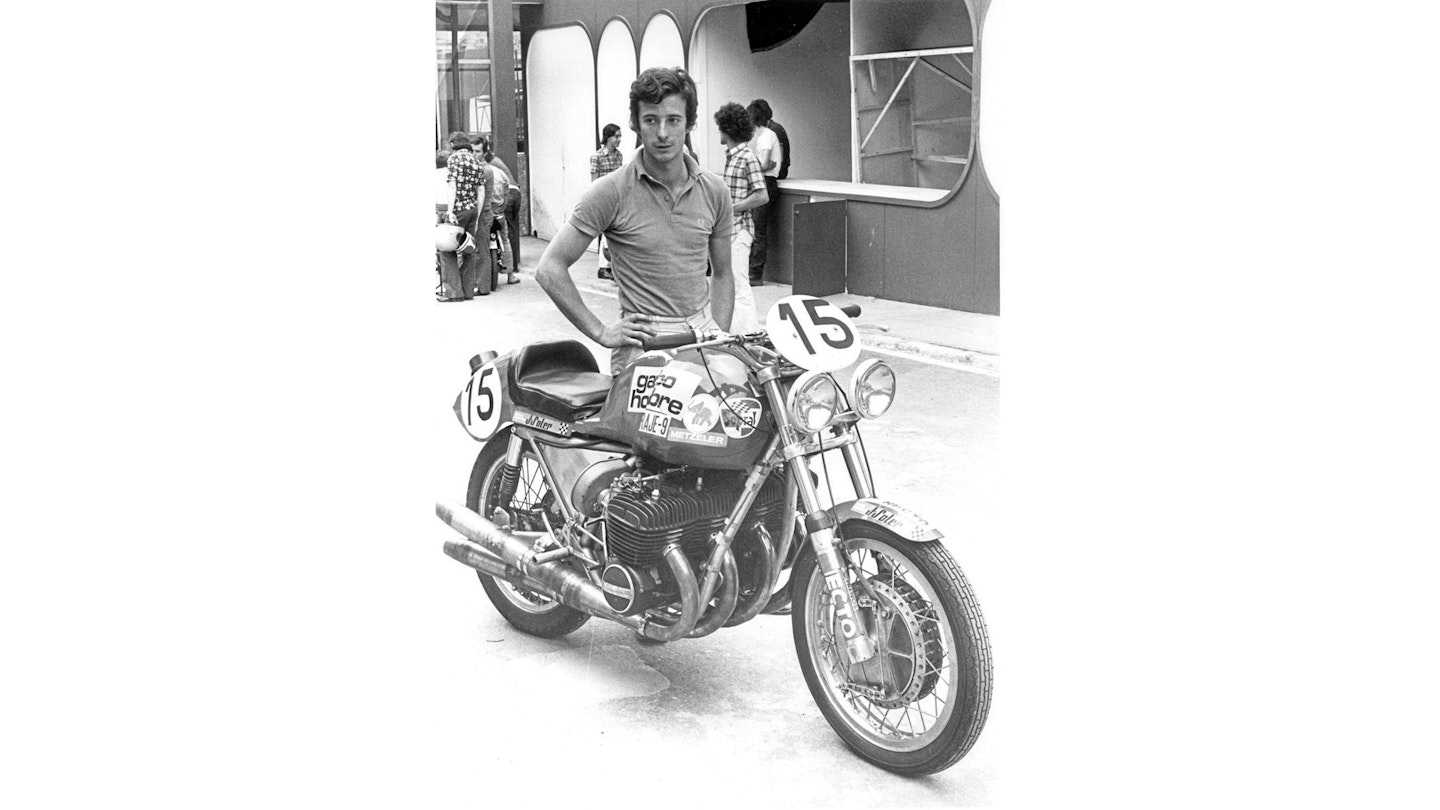
During the late ’60s, Spanish manufacturer Ossa developed a 500cc two-stroke twin that was based on two of their 230/244cc singles. This was a joint project with US company Yankee Motors, who envisioned the machine as a dirt bike to cash in on the growing demand in the US market (though fewer than 1000 were made). Back in Barcelona, Fernando and Javier Batlló had an even more audacious idea – they joined together two of the Yankee 500s to create a 960cc two-stroke four and fitted it into a modified Yankee chassis. Apparently the power output started at 80bhp, rising to 118bhp with some development. How much of that power could actually be used on the tight Montjuic circuit that was host to Barcelona’s 24-hour race is moot. It also needed a huge fuel tank to satisfy its sub-15mpg thirst. At the 1972 race the bike crashed out and the following year it retired with mechanical issues. The whereabouts of the original bike are unknown, but a replica does exist.
Information from motos.espirituracer.com
Ariel V4
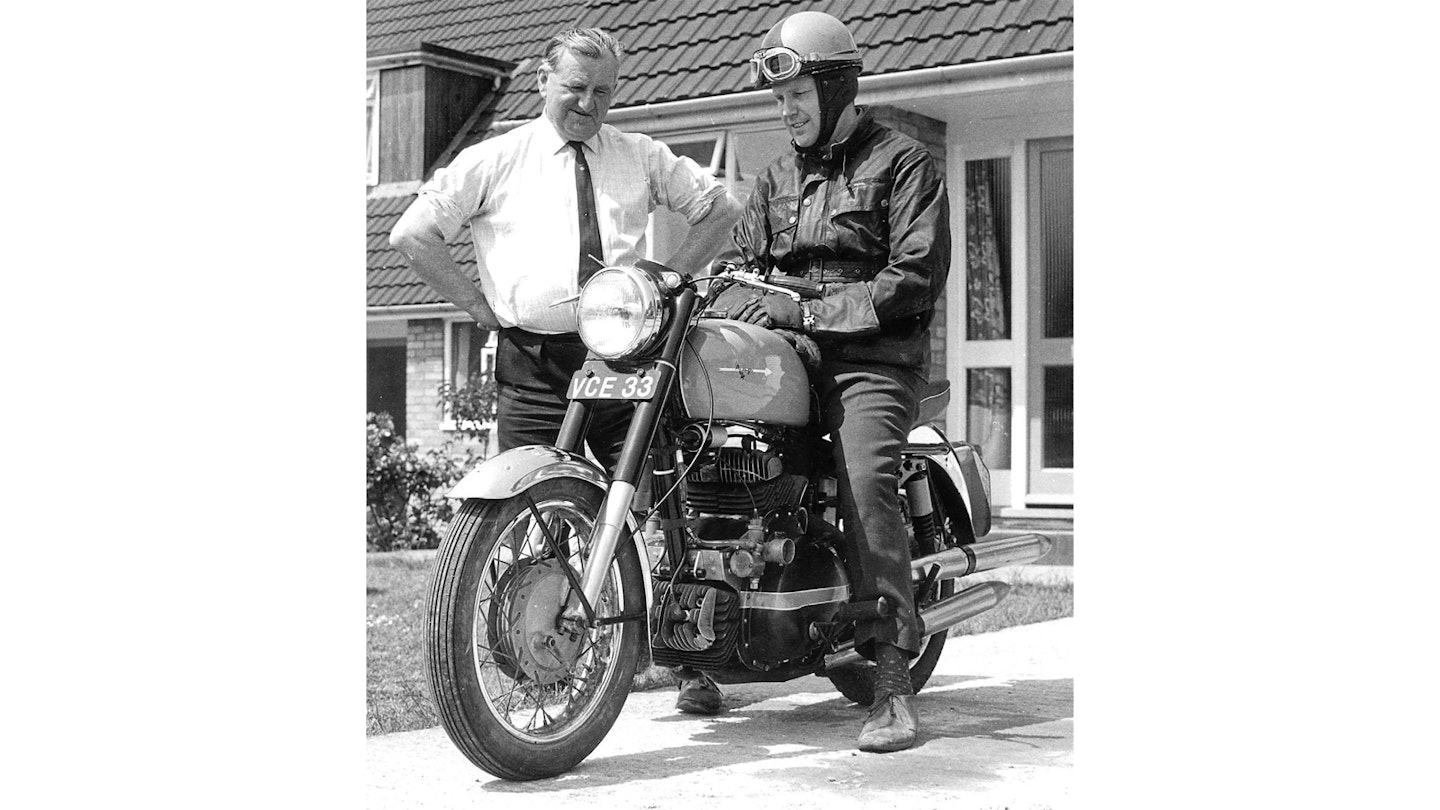
Yamaha and Jawa had built twin-crankshaft V4 two-stroke GP racers in the mid-’60s, so why shouldn’t a DIY engineer make one for the road? The basic ingredients here are a pair of Ariel Arrow engines squeezed into a lightly modified Royal Enfield chassis. It appears that the gearbox of the lower unit has been removed, and the two engines are linked by primary chains running inside a custom-made case. The upper engine has its cylinders reversed to allow the two carbs to fit between the vee. The picture is dated 1971 and identifies the bike as an Avenger 4, but we don’t know who made it. Sadly it is no longer listed on the DVLA database. Do you know more about it?
Monotrack
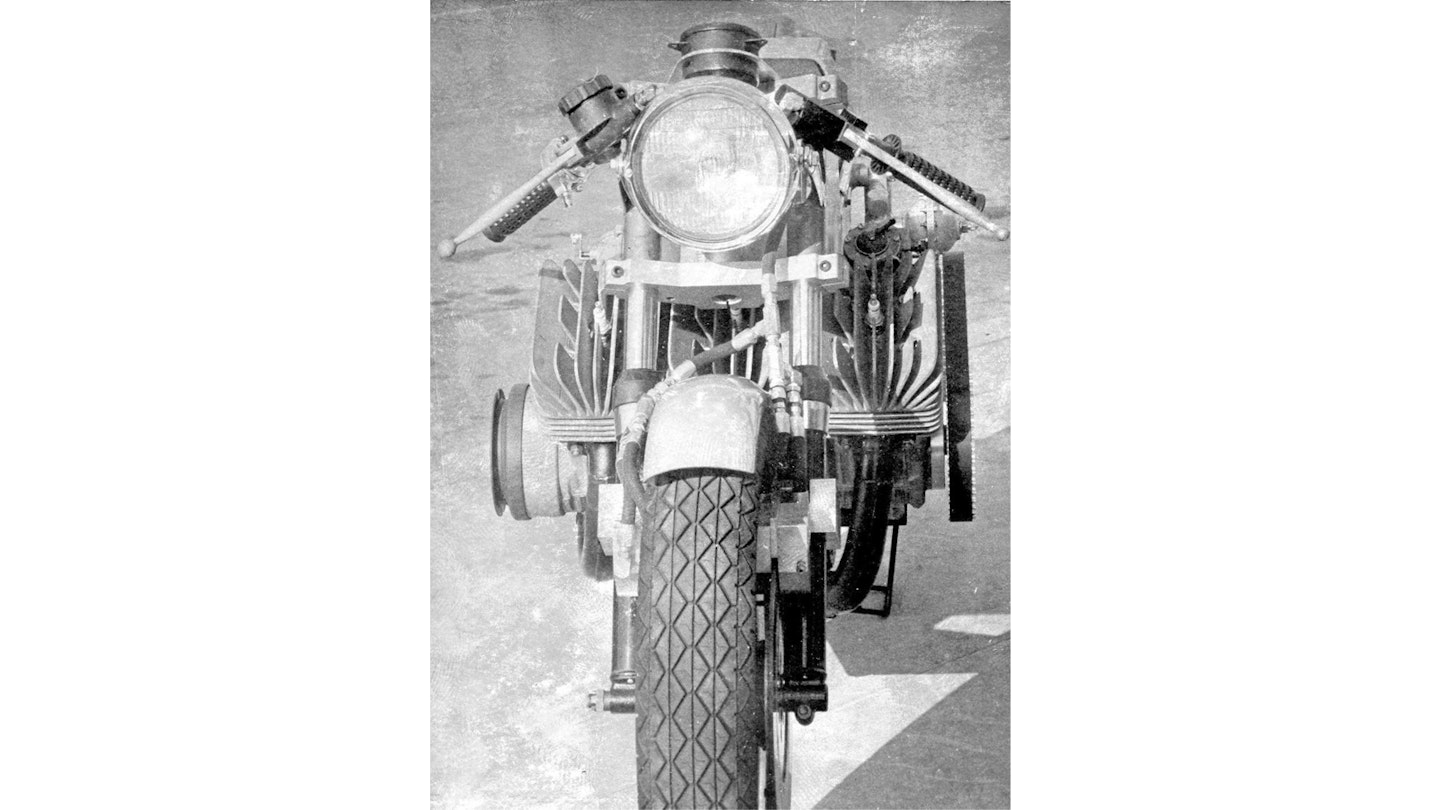
Unfortunately, the front-on view that we found doesn’t really do justice to the audacity of the Monotrack’s design. That’s a three-cylinder Kohler snowmobile engine (possibly 660cc), with the belt drive from the end of the crank driving a torque converter to provide a variable final-drive ratio, with final drive also by belt. The chassis is a magnesium monocoque and the wheels are specially produced 16in items. Suspension is provided by air-springs with oil damping. The design was produced by Dan Hanebrink in response to a 1971 commission by the publisher of American magazine Cycle News. The finished bike appeared two years later. Hanebrink went on to produce a number of BMX and mountain bicycle innovations, but he sadly died in 2018.
Non-vintage Puch
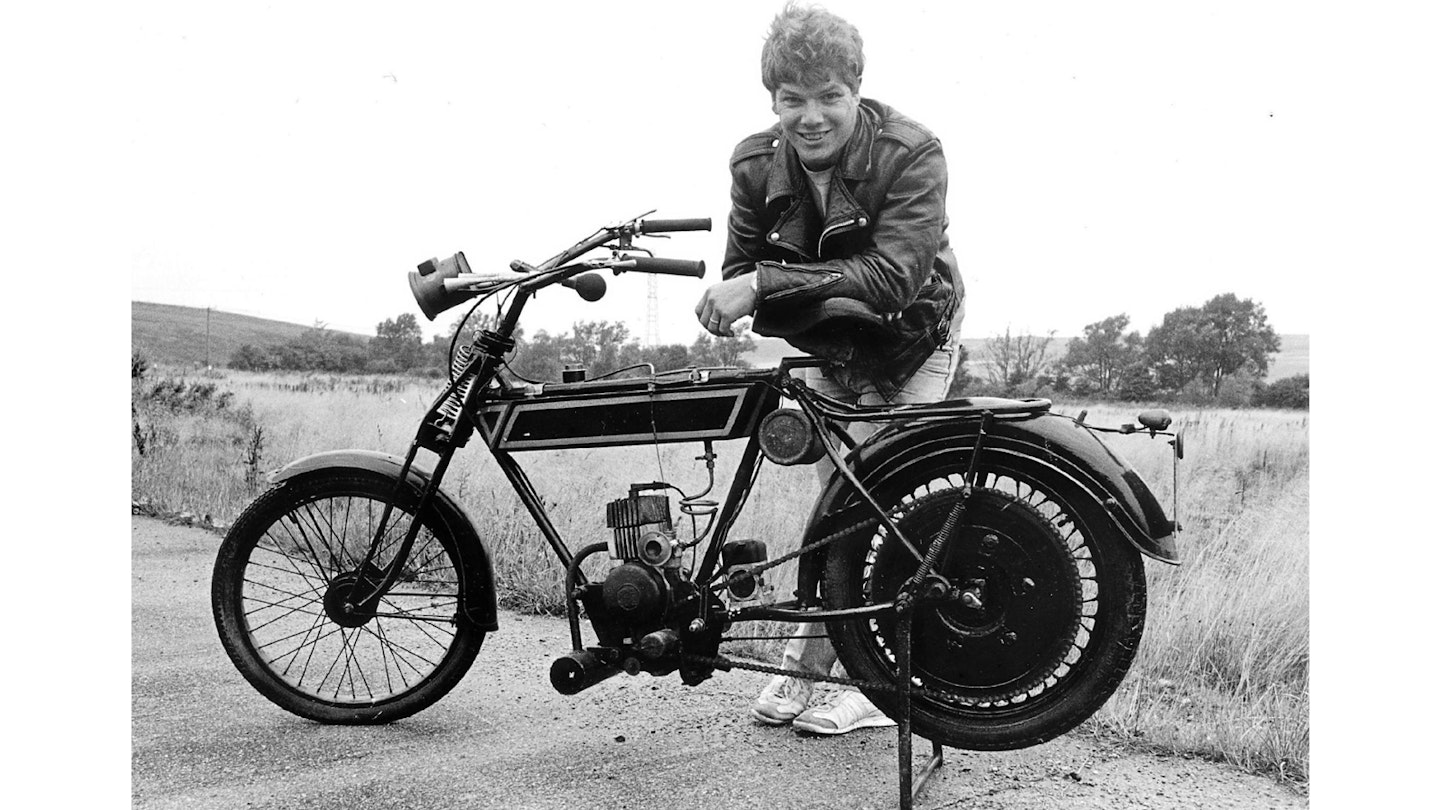
This looks like a lightweight vintage bike that has had its original engine swapped for a Puch moped power unit, but mounted with its cylinder vertically. Our own Rick P isn’t so sure. “My guess is that it’s a home-made frame or a modified bicycle. With older bikes, the frames are always much harder to get than engines; so if it was ‘real’, someone would have done better with the engine. The forks are certainly home-made Druid lookalikes with what looks like a washing machine motor pull spring.” We’re guessing the photo is mid-’80s. Does anyone know where it is now?
Ariel 3
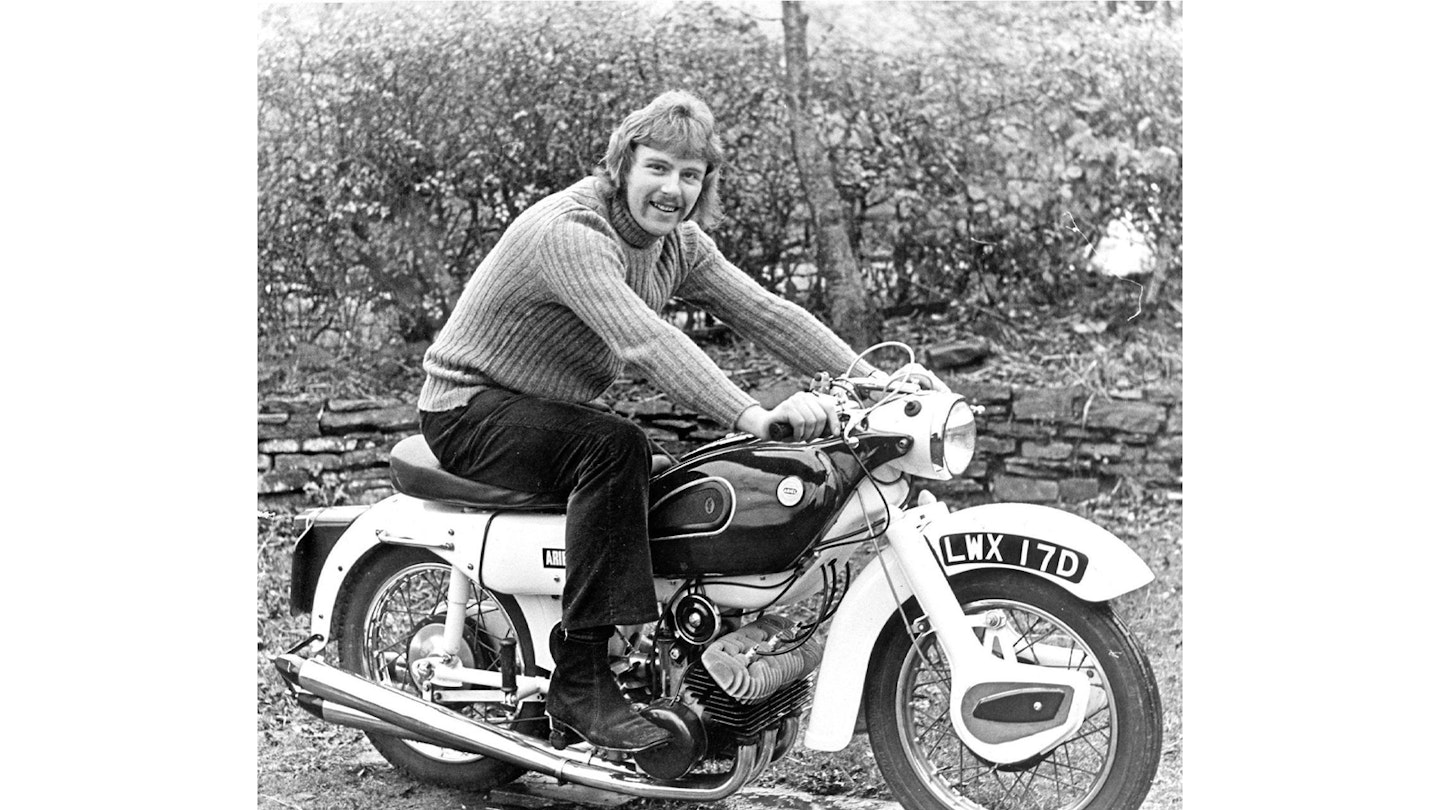
No, not that one. Adding extra cylinders to two-stroke engines has been popularised in recent years, but the same thing was happening in the 1960s, with Ariel’s 250cc engine being a suitable case for treatment. The first to see the potential were sidecar racer Mick Boddice and chassis guru Ernie Earles, who doubled up the British two-stroke to create a 500cc four that was installed in a sidecar chassis around 1960. This used a central coupling between the engines, making it very wide, and was never made to run effectively.
There were other specials, like this tidy example with one extra cylinder grafted on to create a 375cc triple. The standard Arrow was quoted at 20bhp, so upping the power output to 30 would have added a decent turn of speed. Sadly, we don’t know anything more about this bike or its moustachioed pilot, except that it is currently on SORN. If you know more about it, please get in touch.
Honda Sachs Wankel
Bob Monaghan scooped the Motor Cycle News Special of the Year award at the 1975 BMF Rally with this Wankel-engined home brew. No, not a two-stroke, but still in need of oil with its fuel and certainly lacking valves. The chassis is Honda CB72/77, the engine a Sachs Wankel rotary and the gearbox appears to be AMC. We’d love to know more. Does anyone remember it? Does it still exist? Write and tell us.
